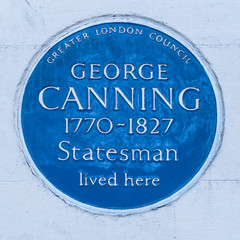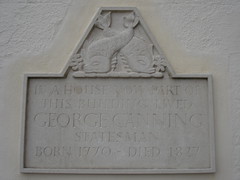George Canning
Commemorated on 4 plaques
George Canning 1770-1827 statesman lived here
50 Berkeley Square, Westminster, W1, London, United Kingdom where they lived
In a house now part of this building lived George Canning statesman. Born 1770 - died 1827
101 Marine Parade, Brighton, United Kingdom where they lived
George Canning (1770-1827) Prime Minister during 1827 lived here between 1811-1814
Burbage Constitutional Club/Canning House, Church Street , Burbage, United Kingdom where they lived (1811-1814)
Seaford House. George Canning 1720-1827 MP for Seaford Prime Minister stayed in a house on this site
Seaford House, Crouch Lane, Seaford, United Kingdom where they stayed





